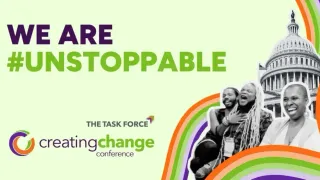August 5, 2020
HIV Knowledge Doesn't Always Change Teen Behavior: Peers Matter
READ TIME: 5 MIN.
Marisen Mwale, Mzuzu University and Adamson S. Muula, University of Malawi
HIV and AIDS remain major global public health challenges, especially for sub-Saharan Africa. The region accounts for around 70% of the world's burden of infections. Young people, especially young women, are affected more than other groups.
In Malawi, for example, the prevalence of HIV among people aged 15-24 years rose to 5.9% between 2010 and 2015. Prevalence fell in the broader age group of 15-49 years. In 2016, Malawi had 36,000 new HIV infections, over half of them among young people.
UNAIDS and the National AIDS Commission reports show that only about 42% of young Malawians aged 15-24 years have accurate knowledge of HIV and AIDS. This is despite various efforts to inform people and change behavior that could put people at risk of infection. Efforts have included mandatory sexuality education in schools and extracurricular interventions such as "Why wait" and AIDS Toto. These were intended to impart risk avoidance skills and knowledge to encourage abstinence, delayed sexual debut, condom use and faithfulness to one partner.
The question is why the intervention efforts are not having the intended effect. Is their relevance the problem, or is it implementation bottlenecks?
Against the background of this rising HIV incidence and disappointing behaviour change interventions, we designed a study to identify where the gap could be. We also wanted to explore alternative interventions within a sociocultural framework.
We got the help of adolescents themselves to design an intervention and then tested it to see whether it could work at a larger scale. This could be a useful part of efforts to address a combination of influences on behaviour, such as poverty and gender.
What we did
Our project, conducted in northern Malawi, had three phases.
In the first phase, we wanted to find out what effect knowledge about HIV had on the behaviour of adolescents. Specifically, we were looking at behaviour to limit the number of sexual partners, delay sexual initiation, practise abstinence and consistently use condoms.
We asked 552 girls and boys aged 11-19 to confidentially fill in questionnaires. We asked them whether they had sexual experience and what they knew about how HIV is transmitted and prevented. Of the respondents, 47.5% were sexually active. We found a weak link between knowledge about HIV and subsequent HIV risk reduction. This was similar to other studies that have found many people continue with risky sexual behaviours even when they have the facts about HIV.
One of the reasons, we found, is that young people get contradictory information from different sources. Or the emphasis is different from one source to another.
We also found that peer pressure was driving a lot of their risky behaviour. So, involving adolescents in designing research could help us get closer to what we need to know.
We then designed an alternative bottom-up model that would be more relevant to the context and culture. The risk reduction behavioral model we designed with young people's help was also meant to suit a sub-Saharan African setting where resources are constrained. It needed to be cost-effective.
In the second phase, we tested the peer education intervention. Some school goers were exposed to this HIV intervention. A control group were exposed to a different package of health information focusing on TB and malaria prevention that we also designed to parallel the intervention.
After eight months we found that the intervention group was 96% less likely to have sex than the control group. They were more than three times more likely to use condoms and less likely to have multiple sexual partners. No significant differences were registered on abstinence and the desire for medical male circumcision.
Lastly, we presented the model to stakeholders such as Population Service International, Livingstonia Synod AIDS Programme, Girls Empowerment Initiative, Plan International and World Vision Malawi to see whether it was acceptable and could be scaled up to the entire population of adolescents in Malawi. The stakeholders agreed that it had this potential.
Our peer intervention
Our model was an effort to shift intervention from knowledge alone to building risk reduction skills. Unlike previous programs, we tailored our intervention in line with age categories of adolescents. This was because we found in the first phase that sexual behaviour dynamics differ between early and late adolescents. For instance, early adolescents (11-14 years) are mostly sexually inexperienced, but their late adolescent (15-19 years) counterparts are more likely to be sexually active. We therefore wanted to give early adolescents the skills to remain abstinent for longer. Older adolescents needed the skills to use condoms and be faithful to one partner.
The model is sociocultural and premised on Malawian socialization and rites of passage. Young people are mainly modeled into their norms and values by older siblings and older children within the community acting as mentors and demonstrating expected cultural behavior. Song and role modeling are often scripted to offer practical value. The model was a modification of such Malawian cultural traditions for context specificity, acceptability and sustainability.
When we tested the risk reduction model, we involved university students aged 18-23 years as facilitators and mentors in line with our cultural adaptation. This was based on sociocultural and social-learning theoretical frameworks to shift the focus of interventions towards underlying social and structural causes of behavior – such as poverty and gender disparities. These are often ignored but are potential drivers of HIV infection among young people.
The older mentor involvement would mimic socialization in communal sub-Saharan African settings. We also hoped that younger people would identify with the age group of the mentors and look up to them as achievers.
As recommended by adolescents themselves, we included some entertainment in our risk reduction model.
Conclusions
We believe that our intervention could improve HIV risk reduction outcomes among adolescents in Malawi and perhaps similar settings. Our study shows that interventions designed with the involvement of adolescent beneficiaries and which are specific to a context and culture have greater potential for HIV risk and incidence reduction.
We understand that designs are also shifting towards combination options which integrate various strategies. Most incorporate a structural component, to address not only the immediate determinants of sexual behavior but also less direct ones like poverty and gender disparities.![]()
Marisen Mwale, Lecturer in Psychology, Mzuzu University and Adamson S. Muula, Professor of Epidemiology and Public Health, University of Malawi
This article is republished from The Conversation under a Creative Commons license. Read the original article.






